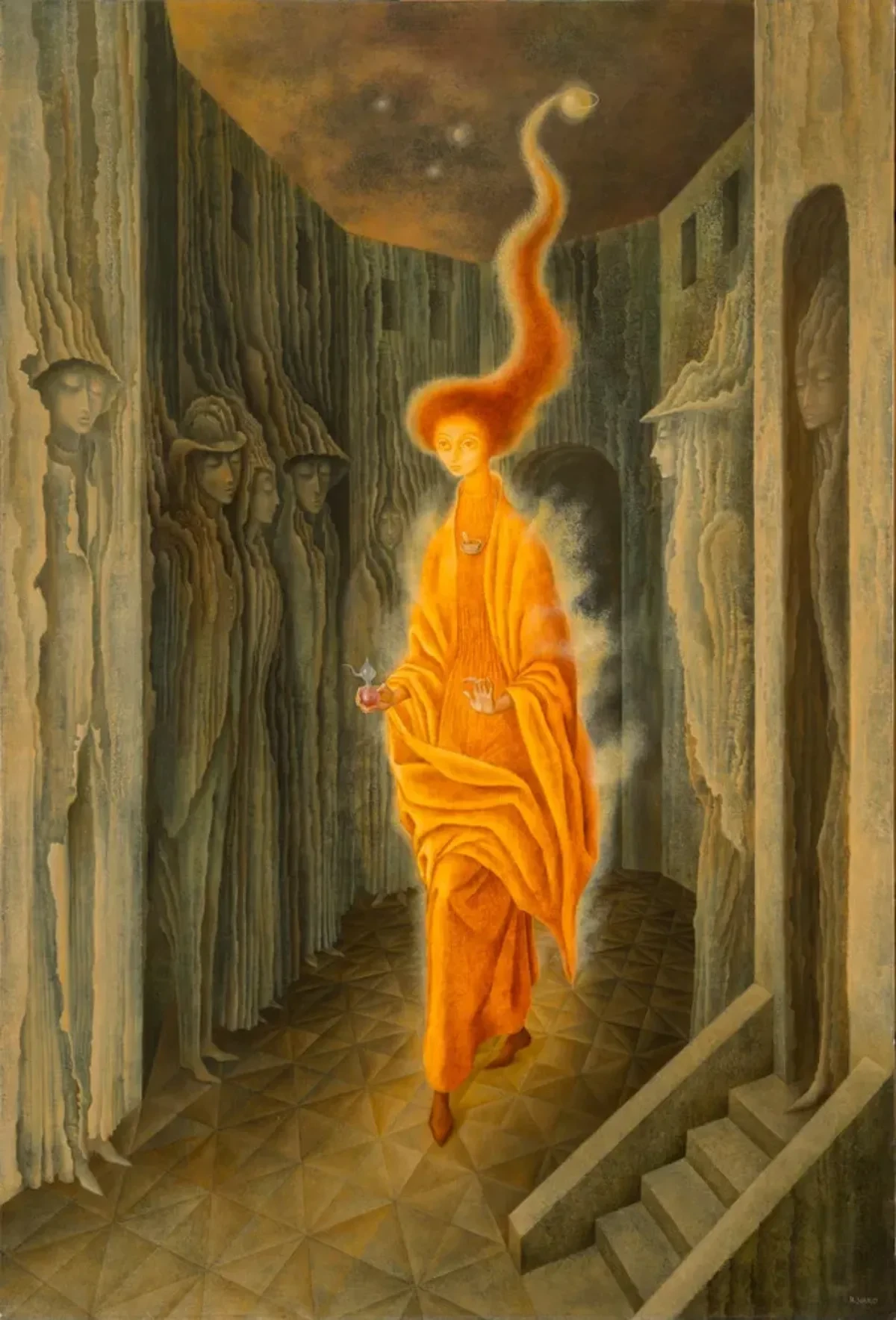Boosted by cstanhope@social.coop ("Your spooky 'net denizen"):
LauraJG@deacon.social ("Laura G, Sassy 70’s") wrote:
My October art history theme is, very loosely, Halloween. So, some dark, some surreal, some scary, some lighthearted works, not necessarily specific to the holiday.
Today I present, by Spanish-Mexican woman artist Remedios Varo (1908-1963), La llamada (The Call), 1961, oil on Masonite, 42 x 31 in., © 2023 Remedios Varo/Artists Rights Society, National Museum of Women in the Arts. More in ALT. #arthistory #womanartist #womenartists #surrealism
From Christie’s auction house: “She moved to Paris in 1937 and due to her political ties was banned from returning to Spain following the Spanish Civil War. When World War II neared Paris in 1940, Varo was imprisoned with her partner Benjamin Péret because of his political activities. Upon their release they caught one of the last ships allowed to depart the country and fled to Mexico…
Despite Surrealism’s insistence on cultural liberation, it was largely an all male affair. The 1924 Surrealist manifesto excluded female artists, and women were often relegated to the role of 'artist's muse.' The work of Varo together with that of other artists of her generation like Leonora Carrington, Leonor Fini and Dorothea Tanning, represented a vital antidote to this male-dominated narrative.
Varo was not only a leading female artist of the Surrealist movement, but she frequently used her art to assert the collective power of women and femininity. Likewise, her paintings often represent women as the central protagonists fully in control of the environs they inhabit. She frequently incorporated motifs like ‘the cage’ and ‘the tower’ into her work, representing the urge to break free from patriarchal structures, and her use of feminine tropes like ‘the boudoir’ in her work was just as revolutionary in the male-dominated world of Surrealist painting.”
